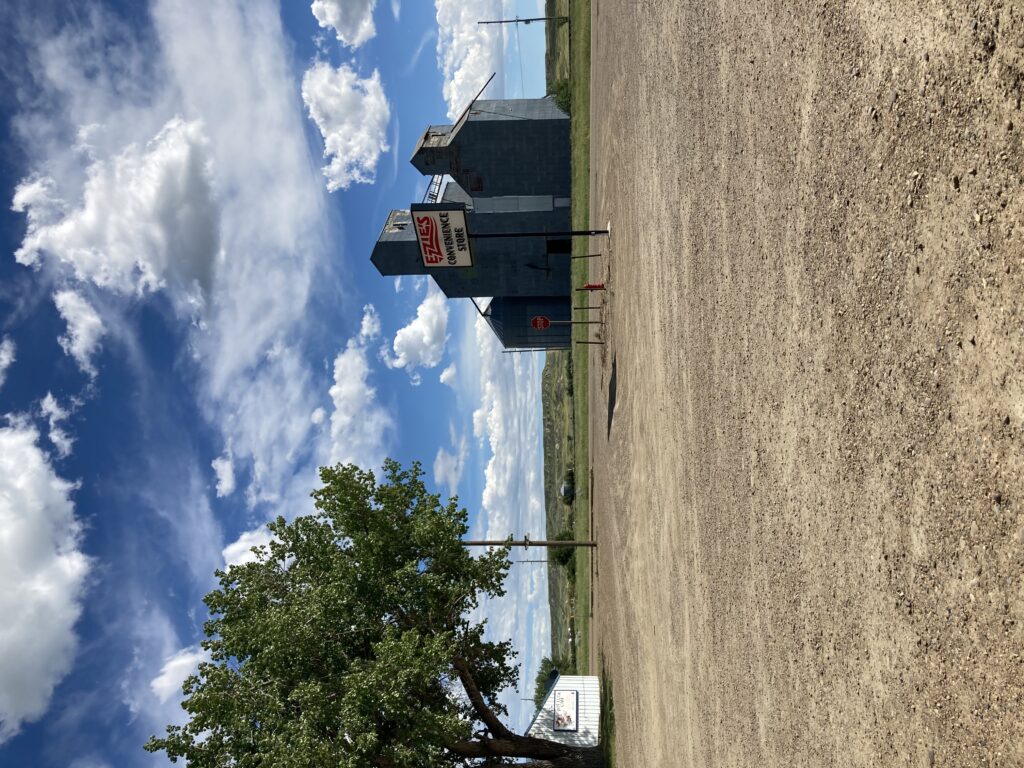Where did the wheat in those organic crackers sitting in your cupboard come from? More likely Turkey than the northern Great Plains of the American West. While demand for organic food has boomed in recent years, production of organic grain in the United States has not kept pace accordingly.
For those interested in improving environmental quality in agricultural areas of the northern Great Plains, replacing acres of conventional grain with organic is a worthy goal. Organic farmers do not use the pesticides and synthetic fertilizers that many conventional farmers apply. Instead, organic farmers rely on techniques like crop rotation that mimic natural processes to enhance soil fertility. Compared to conventional agriculture, these practices increase biodiversity, build soil health in the long term, and in some cases, even increase the amount of carbon stored in the soil.

Canola, which can be part of organic grain rotations, growing in eastern Montana
Organic farms in the United States tend to either be small—think the farm from which you might buy vegetables at a farmers market—or very large—think the farm in California that grew the organic spring mix you bought at the grocery store in December. Seventy one percent of the organic farms in the United States sell less than $250,000 of product annually, while 17% sell more than $500,000 annually. The remaining 12% between $250,000 and $500,000 represent the “missing middle” among organic farms.
Mid-sized operations are too large to market directly to consumers, but they also do not produce at a scale large enough to contract with large food or agribusiness companies. To reduce costs, large food manufacturers usually attempt to minimize the number of processors or farms they source from, making large organic farms more attractive partners. Additionally, large companies with the most buying power usually have specific and inflexible quality specifications that the grain they purchase must meet. Organic products tend to be more physically variable than conventional, so organic farms in general are at a disadvantage compared to conventional farmers when they try to fit into the industrialized food system.

A grain elevator on the High Plains of Montana
Demand for organic grain has risen steadily in the past decade, much of it driven by sales of organic animal products and meat, which must be raised on organic feed. Sales of organic meat increased by nearly 300% from 2008 to 2016. Yet production of organic grain only increased 22% over this same period. Imported organic grain has largely made up the difference. This is a huge missed opportunity for the northern Great Plains, both economically and environmentally.
Although expanding the size of existing organic farms would help provide more domestic organic grain, encouraging more farms to transition from conventional to organic is also part of the puzzle. For new farmers or those transitioning from conventional production, starting at a medium size is more feasible and less risky than immediately pursuing a large-scale operation. New organic grain farms are more likely to be mid-sized, so disincentives for farming organic grain at a moderate scale are disincentives for transitioning to organic at all.
In the past, small and medium farms have worked to overcome size-related competitive disadvantages by forming organizations to market their products collectively and share certain costs. In fact, farmers are uniquely exempt from certain federal antitrust laws regarding sharing price and production information for mutual advantage. Despite apparent benefits of organizing, cooperatives for marketing organic grain have not emerged as production has expanded. Ironically, the lack of medium-size farms itself creates challenges for the viability of medium farms. Organizing and collectively marketing isn’t feasible if there are an insufficient number of appropriately sized farms available to participate.
Making medium-sized farms more viable is key to expanding overall organic grain production in the United States, which would provide significant environmental and economic benefits to rural agricultural areas across the northern Great Plains. Strong demand for organic grain already exists. Providing would-be organic farmers tools to thrive “in the middle” is critical to enabling farmers to take advantage of it for the benefit of themselves and their communities.
Charlotte Benishek, Research Assistant|Charlotte Benishek is a joint MBA and Master of Environmental Management candidate at the Yale School of Management and Yale School of the Environment. She is interested in the connection between sustainable agriculture and rural economic development. Charlotte’s interest in sustainable agriculture began as a teenager growing up in Wisconsin, where she worked on an organic farm. Before coming to Yale, she worked in the U.S. Senate as an advisor to Senator Tammy Baldwin on agricultural and environmental policy. Charlotte holds a BA in environmental studies from Wellesley College. See what Charlotte has been up to. | Blog

